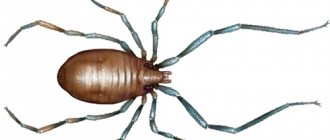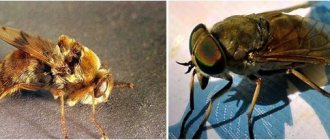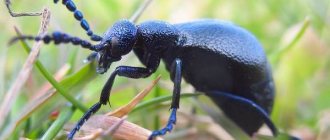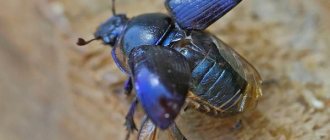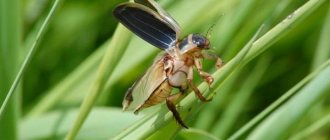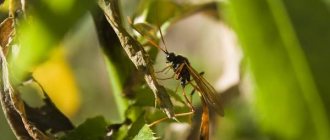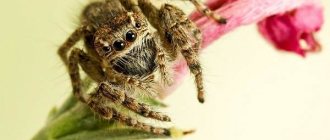The onset of spring brings not only excellent weather, outdoor picnics and walks, but also such an unpleasant phenomenon as the activation of ticks. Ticks are small arthropods from the order of arachnids that have lived on the planet for several million years. Since they live mainly in the soil, the period of their activity occurs when it warms up to +5 degrees. Many of the representatives of this subclass are carriers of severe diseases such as tick-borne typhus, encephalitis and borreliosis. The number of species of mites is amazing and is recorded at approximately 50 thousand, but researchers divide the subclass itself into three groups: harvest mites, parasitiform and acarimorph mites.
Pliers: description
Such representatives of the arachnid species are not large in size, as they grow in length up to 3 mm and no more. The average size of these living creatures is in the range of 0.1-0.5 mm. Ticks, like all arachnids, lack wings. Adults have up to 4 pairs of legs, while juveniles have only 3 pairs of legs. Ticks also do not have eyes, but this feature does not prevent ticks from sensing their prey at a considerable distance, thanks to the presence of a special sensitive apparatus. Depending on the structure of the body, ticks are divided into several groups: leathery, with a head that is fused to the chest, and also with a head that is movably connected to the body (armored). Depending on this, each group breathes in its own way: the first 2 groups supply oxygen to their organs through the skin or trachea, and the last group breathes through a special organ.
Species diversity
What types of ticks are there, what do they eat and where do they live? These questions are asked by novice entomologists and simply nature lovers.
Saprophages
A large number of mites belong to the group of saprophages. They feed on organic debris and do not pose a threat to humans. The lifestyle and significance in nature is similar to earthworms. Saprophages contribute to the formation of soil humus. A typical representative of this group is the oribatid mite. It is the dominant species found in forest soil. Their number reaches hundreds of thousands of individuals per 1 m2. The size of adult individuals is 0.7-0.9 mm, their body is black.
Oribatids are an important link in the soil food chain. Oribatid mites have slow metabolism and development. The life cycle from egg to adult takes from several months to 2 years.
Attention. Some types of helminths parasitize the body of oribatids; feeding on grass with ticks, animals can become infected with tapeworms.
Phytophages or plant mites
Among arthropods, many species feed on plant sap or their remains. Phytophages are pests of indoor plants and agricultural crops. Their habitats are leaves, buds, roots, and bulbs. What types of mites can be found on plants?
Pests feed on the cell sap of plants, they bite into tissues and pierce leaves. General damage contributes to the drying out and death of crops. Spider mites are the most famous parasite on indoor flowers and agricultural crops. Due to its small size (0.3-0.5 mm), it is not immediately noticed on plants. The consequences of its vital activity are spots on the leaves and the appearance of cobwebs.
Mites live in colonies, hiding on the backs of leaves. Favorable conditions for their development are temperatures of 27-280 and low humidity. Larvae and adults feed on plant sap. If not treated with acaricidal preparations, spider mites can destroy the entire crop. On indoor plants, in addition to the common spider mite, you can find other species: red, Atlantic, red-legged.
Gall mites are members of the family of dangerous pests of forest trees and cultivated plants. They settle on apple trees, plums, pears, and grapes. They are small in size - 0.1-0.3 mm. The body is spindle-shaped and has four legs. Pests suck sap from tissues, causing deformation and the formation of galls (pathological formations on leaves, roots and other parts of plants).
Barn
This group of mites feeds on solid food - grain, flour and other products. Barn mites are distinguished by their viability and wide distribution. They settle not only in places where human supplies are stored, but also in animal burrows. They can be found in the soil, on tree roots, in mosses, and above-ground parts of plants.
The flour mite eats cereal and sunflower seeds, dry fruits and vegetables, and cheese. Body size is from 0.2 to 0.5 mm, the color is transparent. If it gets into food, it causes poisoning; if inhaled, an asthmatic reaction occurs.
Water inhabitants
Water mites have a rounded body and elongated legs with bristles, a structure that facilitates swimming. The larvae parasitize mollusks and aquatic insects. The development of ticks is unusual, there are two egg phases - primary and secondary, the larvae also go through two stages - six-legged and eight-legged. Members of this family are often brightly colored.
Diet of ticks
Depending on their diet, ticks are divided into:
- Saprophages that feed on organic matter.
Saprophages are involved in the process of converting humus, therefore they are considered very useful living beings. Parasitic mites, whose diet consists of plant sap, cause significant damage to agriculture. They destroy crop reserves at high speed.
Dust or scabies mites eat dead particles of human skin. Barn mites cause serious damage to food stored in warehouses. Subcutaneous mites eat fat that accumulates in human hair follicles. Spider mites suck the juices of various plants, including cultivated ones. Ear mites feed on the fat layer located in the ear canals.
- Predators that parasitize both animals and plants.
Blood-sucking ticks are constantly in their hiding places, where they wait for their potential victim. On the legs of these arachnids there are special claws and suction cups that allow them to cling to clothing, the body or skin of humans or animals. After they land on the body of their victim, they move to their places of vital activity. This could be the armpits, groin, head or neck area, etc. In this case, mites can parasitize the body of other types of mites or thrips.
Ticks, and especially their bites, are quite dangerous for humans, since parasites are carriers of fatal diseases such as encephalitis and others that are no less dangerous.
Ticks can remain without food for 3 years, but if they are very lucky, they become quite voracious, increasing in weight up to 120 times after being saturated with blood.
5 Most Dangerous Ticks in the World
How to deal with forest ticks?
Many people prefer to spend their free time outdoors, in particular in the forest. It is in this case that it is necessary to turn to preventive measures that will help avoid tick bites. What should you do first to combat the parasite?
When going to the forest, you need to dress closed so that the bloodsuckers do not have the opportunity to attack you. It is better to purchase special clothing or equip yourself so that forest ticks do not have access to the skin. Pants should be tucked into shoes and the sleeves should be close to the skin.
Each walk should end with a thorough inspection of all dangerous places. In most cases, ticks are found on the neck, in the armpits, on the inside of the elbow or under the knee.
It is better to purchase a cream or aerosol that will repel ticks, and use it on everything you are going to wear, as well as exposed areas of the skin.
It will be a plus if you wear light-colored outerwear. In this case, the bloodsucker will have less chance of clinging to you, and you will have the advantage of instantly detecting it. The head must be covered, as forest ticks love to crawl under the collar.
Dry places and direct sunlight often avoid the pest. Try to stay away from dense bushes.
If you know that you will need to be in nature for a long period of time over several days, and especially in a place where there is a high probability of encountering forest ticks, get vaccinated.
Types of ticks with photos and descriptions
Scientists know about more than 40 thousand species of ticks, which are divided into 2 main groups. For example:
- Parasitiforms, such as gamasid, argasid, nutallium and ixodid ticks.
- Acariformes, such as scabies, hair, feather, marine, freshwater, thyroglyphoid, acaridia, oribatiformes, sarcoptiformes and thrombidiformes.
- Haymaking ticks are also isolated as a separate group.
Main types of ticks and their description:
Ixodid ticks
They differ in that their body is covered with reliable chitinous plates. Moreover, they can have quite impressive sizes. There are species that reach a length of up to 2.5 cm. This type of tick prefers to parasitize in temperate latitudes, where they hide in the leaves of trees and shrubs. Therefore, they are found on almost the entire Eurasian continent. Potential victims of ixodid ticks are wild or domestic animals, as well as humans. If it gets on the skin of its victim, it will be able to feed on blood for several weeks. The female is quite fertile, as she is capable of laying up to 17 thousand eggs per season.
Argasid mites
They prefer to live in crevices of various buildings and outbuildings, and can also live in bird nests, which birds do not use. Their potential victims are poultry and animals, although they can also attack humans. They are often found in chicken coops. Argas mites bite quite painfully, and a profuse rash appears at the site of the bite and unbearable itching occurs. This parasite is characterized by soft skin, and the head protrudes slightly beyond the body and seems barely noticeable.
Armored mites
They are found on the soil surface, although there are species that live in trees. These ticks are not parasites, since they feed on natural food, in the form of mushrooms, lichens, living plants and their remains, and they also eat various carrion. Despite this, oribatid mites pose a certain danger to both birds and animals. The fact is that they can infect with various types of helminths, including tapeworms.
Gamasid mites
They settle in bird nests, chicken coops, and also in rodent burrows, since they parasitize on them. This parasite lives for a little more than 6 months, growing up to 1 mm in length. During this period of time, the parasite can cause serious damage to poultry farms. Their vital activity leads to significant loss of feathers in birds, as well as the appearance of extensive scratching on the skin.
Subcutaneous mites
They live under the skin of humans or animals, causing a lot of discomfort. However, if parasites are not properly controlled, they can live for years, causing severe itching and irritation. The female lives no more than 3 months, but during this period she lays an average of 100 eggs, from which viable individuals emerge in just a couple of days.
Scabies mites
These are parasites that can cause a difficult-to-treat disease called scabies. At the same time, ticks parasitize both humans and animals. The problem is that parasites make a lot of tiny passages in the skin of a person or animal, which leads to itching and redness. Ticks feed on skin secretions. Adult ticks live no more than one and a half months, but during this time the female manages to lay eggs several times.
Ear mites
They settle in the ears of cats and dogs. They pose no danger to humans, but cause a lot of trouble to animals. Animals scratch their ears vigorously, which often leads to severe inflammation.
Dust mites (bed, linen)
They do not parasitize the body of humans or animals because they feed on dust, fluff, feathers or dead particles of human epidermis.
They often cause a disease such as asthma, which is practically untreatable. The female lives up to 4 months and during this time lays about 3 and a half hundred eggs.
Spider mites
They do not parasitize humans, animals or birds, as they are “vegetarians”. Their main diet consists of plant sap. They can be found on the plant if you look under the underside of the leaves. In addition to the fact that they actively suck juices from plants, they can infect the plant with gray rot. This disease can lead to the death of the plant.
Water (sea) mites
For their life activities, they choose various bodies of fresh water. Some species prefer to live in salty sea water. As a rule, they parasitize mollusks and other insects living in the water column.
Predatory mites
They destroy their relatives, so people use this factor in the fight against parasites in greenhouses and greenhouse farms. Typically, predatory mites help control spider mites.
Barn mites
These are quite serious pests that cause great damage to grain or flour stocks, although they do not pose a danger to humans. Its vital activity leads to the unsuitability of food products, as they become clogged with waste from the vital activity of parasites. This leads to the appearance of mold and rot, after which it is unsafe to eat such products.
Pasture mites
They are found in the southern regions of Russia, Kazakhstan, Transcaucasia, etc. Prefers to live in forest or forest-steppe zones. They pose a danger to both animals and humans, since after their bites you can become infected with encephalitis, plague, fever, etc.
Brown dog ticks
They pose a great danger to dogs, although they are safe for humans. They are found almost everywhere, but especially numerous populations are found in coastal areas and on the Black Sea coast.
Top 5 most dangerous types of ticks for humans.
Gamazovye
This infraorder includes 6,000 species. Of these, there are both parasites and harmless individuals. They often occupy different places. These can be nests, burrows, forest floor, trees.
Vary in size. Their body can reach 5 mm. Mostly small ones. They can parasitize not only mammals and birds, but also bees, snakes, lizards, and spiders.
Some also contain toxins that cause itching and redness in human skin.
They live short lives (up to 7 months). They settle in houses under unsanitary conditions. They live in secluded places and are difficult to notice. A person can become infected from poultry. Farmers raising various poultry, cows, goats must also inspect the animal. Monitor grazing and hygiene.
Man has adapted to use some species on the farm. Phytoseiulus is a predatory species. It is used in agriculture to eat crop pests. For example, it can feed on spider mites and wheat flies.
They have several subspecies (rat and mouse mites).
Where do ticks live?
Various types of ticks are found on almost all continents, regardless of climate zone. Ticks prefer damp areas of the landscape, so they are more often found in forest ravines, in undergrowth, in thickets of coastal vegetation, in flooded meadows, on overgrown paths, on animal fur, in dark warehouses, etc. Some species live in ponds, rivers, lakes and seas, and some species prefer human habitation and various outbuildings.
Prevention of infection
It is difficult to protect a cat from becoming infected with ticks, especially if she lives in a private yard and walks wherever she wants. In order for your pet to be in good shape and delight you with a pleasant purring, you need to examine it after every walk.
Use a thick comb to comb near the ears, paws, belly, under the arms, inspect the ears and paw pads for ticks. If a parasite is found, it must be removed immediately.
In summer cottages where cats live, it is advisable to regularly mow the lawn, remove tall grass, and treat the area with insecticides that kill the parasite. It is recommended to frequently vacuum the floors in the house and carry out wet cleaning so that not a single bloodsucker can ruin the life of a pet. Use folk or chemical means to protect cats from tick attacks.
Mechanism of spread of ticks
On their own, ticks are not able to expand their living space, since they are able to overcome a few meters, but by attaching themselves to the body of a bird or animal, they are able to significantly expand their habitat. Ixodid ticks prefer to be in the temperate climate of Eurasia, but taiga and dog ticks are more common in Siberia, the Far East or the Baltic states.
Order Ixodida
Individuals of this order are the largest of all ticks. The order includes more than 900 species. All representatives of the order have a similar morphology, differing slightly from each other. They have egg-shaped bodies, 4 pairs of legs and brown coloration. The order of ixodid ticks includes 3 families:
- argasids (argas mites);
- ixodids (best known as ixodidae);
- nuttalliellides.
The latter family is a poorly studied endemic to Africa. Reliable data on whom it parasitizes is not yet available.
Argasid mites
Argazids parasitize cats, livestock and poultry. Man is no exception. The size of argasid mites is from 3 to 30 mm. The body is oval, flattened. A hungry individual is yellow-brown or grayish in color. The full one is brown. They differ from ixodids in the absence of a hard protective shell and paws “hidden” under the body. If the ixodid looks like a spider, then the argasid resembles a crawling plaque.
Interesting!
Argazids can live without food for 11 years.
Tick order Ixodidae
Ixodid ticks
Ixodids are the best known and most annoying family. More than 700 species of ixodid ticks are distributed throughout the globe. Ticks of this family are found even in Antarctica and the Arctic, parasitizing birds.
The most famous are taiga and dog ticks. They have a three-level type of development: larva, nymph, adult. To move to a new stage of development, the tick must drink blood.
Morphologically, these two species are very similar:
- tick size 3-4 mm for a hungry female and 2.5 mm for a male; Having drunk blood, the adult female swells to 10 mm;
- egg-shaped body with a very sharp tip on the side of the head;
- The dark brown protective shield in the male covers the entire body, in the female only the upper part of the body;
- The color of the female who has drunk blood is light gray;
- spider-like appearance;
- 4 pairs of paws.
The dog tick is more common than the taiga tick and can parasitize any warm-blooded organism. Females prefer to drink blood from cattle, but dogs also return from a forest walk, hung with these ticks.
On a note!
Ixodids are temporary parasites. Having drunk blood, they fall to the ground.
Development (reproduction) cycle of ticks
Most species of ticks reproduce using eggs, although viviparous species are also found. All arachnids, including ticks, are characterized by division into the opposite sex. Blood-sucking parasites have the most interesting life cycle. In this case, the following stages of development are distinguished:
- Laying eggs.
- Appearance of larvae.
- Transformation into a nymph.
- Adult stage.
Laying eggs
Somewhere towards the end of spring, with the arrival of summer, the female begins laying eggs. In this case, the number of eggs can reach up to 3 thousand, but before that the female must be saturated with blood. Tick eggs look quite voluminous compared to the size of the parasites themselves. Eggs consist of cytoplasm and a nucleus, which are covered with a reliable two-layer shell of various shades, depending on the species. Moreover, their shape can also be varied, both round and oval, both elongated and flattened.
How dangerous is a tick larva to humans?
After about 2-4 weeks, tick larvae emerge from the eggs, which have a direct resemblance to adult individuals. The only differences are their small size (only 0.5 mm) and the presence of 3 pairs of limbs, since adults have 4 pairs.
The body of parasites is not yet fully formed and some elements may be missing. The larvae appear in the warm season, so during this period they are most active. Since the larvae are still very small, they are not able to rise to a significant height. In this regard, their food items are rodents, hedgehogs, lizards, etc. Digging into the body of its victim, the larva consumes blood for 6 days, after which it falls off and ends up on the ground. The next stage of its development begins - the nymph stage. The larvae are not particularly affected by flooding and can remain under water for up to a month.
According to American scientists, the bite of a tick larva is as dangerous as the bite of an adult. This is especially true in relation to ticks, which carry dangerous diseases such as encephalitis.
Months of tick activity
Ticks parasitize in nature from the beginning of April to the end of September, but their greatest activity in the area of our country is observed from April to July. From the second half of summer and into autumn, the chance of a parasite attack decreases, but the likelihood of developing a serious disease after a possible bite increases - due to the accumulation of a greater concentration of infection in the body of the pest.
The awakening of tick-borne bloodsuckers occurs gradually and geographically unevenly. The most obvious harbinger of the appearance of pests is a stable temperature above 10 degrees. In warm, sunny areas, parasites can wake up much earlier than the allotted time for a particular area.
Ticks really don’t like too hot or very rainy weather, so during this period of time their activity noticeably decreases.
During a day with favorable weather conditions, the greatest aggressiveness is observed in the morning, from 8 to 11 a.m., and in the evening, from 5 to 8 p.m.
On cloudy days and during warm rain, their ability to attack does not change and remains approximately at the same level as in good weather.
Tick prevention products
There are 3 types of prophylactic agents:
- Repellent (scaring),
- Acaricidal (killing),
- Insecticidal-repellent (combined action - killing and repellent).
Not everything presented in stores is safe. And since we will be applying the drug to ourselves and our clothes, it is very important that it does not harm our health.
We described in detail what substances should be avoided in insect repellents In it you will also find a selection of natural repellents that are suitable for use by the whole family.
Most natural repellents are made with essential oils. They are absolutely harmless for human use, but not at all attractive and even frightening to blood-sucking parasites.
Essential oils for tick prevention:
- tea tree,
- eucalyptus,
- mint,
- lemon
- juniper,
- pink tree,
- thyme,
- grapefruit,
- Texas cedar,
- geranium,
- carnation
- rosemary,
- lavender,
- hit,
- palmarosa.
Most often, one or more of these essential oils can be found in anti-tick formulations. But such a drug can be made at home with your own hands. Based on essential oils, alcohol and water, you will get an excellent spray that will repel not only ticks, but also other parasitic and blood-sucking pests.
Tick nymph and its danger
The nymph already has 4 pairs of legs, and its size reaches almost 2 mm. This parasite is already moving much more actively, so large animals or birds serve as food for it, and can also attack humans. What is most interesting is that the tick in the guise of a nymph overwinters and only with the onset of spring warmth it turns into sexually mature individuals of different sexes.
Nymphs, like adults, are capable of infecting humans with many serious diseases. Therefore, despite the fact that the tick individual has not yet formed properly, it is quite dangerous.
Tick bite and diseases
The tick bite itself is a rather painful sensation, which is accompanied by negative emotions, itching, burning, and inflammatory processes. If only it all ended there! Together with saliva, the parasite is capable of transmitting some, sometimes fatal, ailments to its victim. For example:
- Lyme Borreliosis.
- Tick-borne encephalitis.
- Epilepsy and hyperkinesis.
- Arthritis.
- Jades.
- Problems with the gastrointestinal tract.
- Pneumonia or pulmonary hemorrhage.
- Heart arrhythmia and blood pressure problems.
- Paralysis of the limbs, with loss of capacity and ability to care for oneself.
Symptoms of a tick bite
As a result of a tick bite, a number of negative reactions of the human body are possible. This is especially true for people prone to allergies. For example:
- Inflammation of the bite site, which is accompanied by a significant increase in body temperature, fatigue and general weakness, chills, aches throughout the body, photophobia, swollen lymph nodes or Quincke's edema.
- In addition, severe headache, nausea and vomiting, and signs of hallucination with breathing problems are possible.
First aid for a tick bite
A tick bite is characterized by the fact that the parasite digs into the body of its victim. The first task is to get rid of the parasite, and you need to adhere to a number of rules. Firstly, the parasite cannot be crushed, and secondly, it must only be removed entirely. The head must not be allowed to remain in the human body. Before the extraction process itself, the problem area must be treated with hydrogen peroxide, iodine or another antiseptic. The steps are as follows:
- The protruding outer part of the parasite must be lubricated with vegetable oil and wait about 5 minutes. The respiratory organs are located in the tail part of the tick. When the parasite begins to suffocate, he will somehow begin to get out of this trap.
- The tick can be treated with kerosene and after 10 minutes it will either come off on its own or its grip will weaken. In this case, you can “unscrew” it using tweezers.
- If there is a wax candle nearby, then it is set on fire and the melted wax is directed towards the part of the parasite protruding from the human body. The wax will harden and cut off oxygen to it, which will force the tick to crawl out.
Mandatory step! The live tick should be stored in a plastic bag. After this, it should be taken to the laboratory for examination. The earlier the disease is detected, the easier it will be to cope with it.
In any case, after a tick bite, it is better to seek help from a specialist. In some cases, it is necessary to immediately call an ambulance. Otherwise, death is possible.
How to remove a tick with a thread If bitten by a tick How to Remove a tick with a THREAD Poddubnye
How to remove a tick (Video)
Before moving on to methods for removing ticks, here is a small list of what should never be done:
- Do not pick up a tick with your bare hands . Always use medical gloves; if not possible, use a bag.
- If someone advised you to douse a tick with gasoline, vodka, or cover it with Vaseline, do not listen! There is a myth that if you block the supply of oxygen, the tick will come out on its own; this is a dangerous misconception. The tick won't come out. But injecting saliva, rich in encephalitis pathogens, into the blood is easy.
- Do not press on the tick or pull it out using the usual method. The problem is that with such actions, the tick will most likely inject saliva into the blood, which may be infected.
The best advice we can give if you are bitten by a tick is to go to the nearest hospital immediately . There, the tick will be properly removed, the wound will be treated, and the insect will be sent for analysis to identify possible infections. If any disease is detected, it is much easier to treat it in the initial stages.
But if it is not possible to go to the hospital, then you should use one of the methods for properly removing a tick.
The first method is using special tweezers, which you can buy in advance.
The second method (field) of removing a tick is using a thread.
Removing a tick with a thread (photo)
Important! After fixing the tick with tweezers or thread, you need to unscrew it! Do not pull, do not press. Please exercise caution and patience.
Tick protection
Nowadays, modern industry has launched the production of many products - repellents that can protect humans and pets from tick attacks. At the same time, you can choose drugs for both adults and children. As a rule, the products are available in the form of sprays, which simplifies their use; just spray them on clothes. It should also be noted that there are some folk remedies that repel parasites. Due to their great sensitivity, parasites detect unpleasant odors at a distance of several meters. That's why:
- Ticks cannot tolerate the odors of many plants, including geraniums, marigolds and lavender. When going into nature, it is enough to put fragments of these plants in your pockets.
- Essential oils from the same plants have the same positive effect. To repel parasites, simply apply them lightly to your wrists and clothing.
- To protect yourself from the negative consequences of tick bites, it is better to go to a special institution and get vaccinated against tick-borne encephalitis. This disease is considered the most dangerous and most common.
What should I do if bitten by a tick
What does a tick look like under the skin of a person? Recognizing a tick is not so easy. If it has already stuck, then a barely noticeable wound will remain on the skin. The bite site is usually itchy, itchy, or inflamed. If you've been outdoors, be sure to take a look at yourself at home.
If you have been bitten by a tick, then you will probably want to know what an encephalitis tick looks like, but this is impossible to do. Infected individuals have no distinctive features in appearance. It is possible to find out whether an individual is infected only through clinical tests. Therefore, it is important to get the parasite alive. You can do this yourself using special tools, but it is still better if you have the opportunity to consult a doctor. If you were unable to get the parasite alive, then a trip to the doctor is mandatory. You will be given a blood test to determine the presence or absence of the disease. Further, depending on the circumstances, you will be prescribed treatment. Ticks also pose a threat to animals. This is especially true for dogs. What does a tick look like on a dog? In fact, the wound is no different from a human bite. But it is even more difficult to detect due to the thick fur of dogs. Always inspect and comb your dog after every walk, this way you will protect it from harmful parasites.
Interesting facts about ticks
- The smallest tick is known to reach a size of 0.08 mm. Because of this, this species is listed in the Guinness Book of Records.
- 3 adult specimens, each 0.2 mm in size, form a point commensurate with the size of a faintly noticeable point.
- The subfamily of ticks “Argasidae” has the ability of omovampirism, when hungry individuals attack their relatives who were able to get enough blood.
- The tick-borne encephalitis virus, like many other diseases, is transmitted transovarially. This means that an infected tick is able to lay already infected eggs, passing the disease on to future generations of ticks.
- Female ixodid ticks feed much more actively than males. As a result of complete saturation, the individual becomes 150 times larger than its hungry relatives.
- Ticks can lay completely unfertilized eggs, although completely viable larvae are subsequently born from them. This phenomenon is called parthenogenesis, which allows ticks to give birth to offspring without having sexual partners.
- Ticks can live up to 3 years without food, and such a hunger strike does not cause them any harm.
